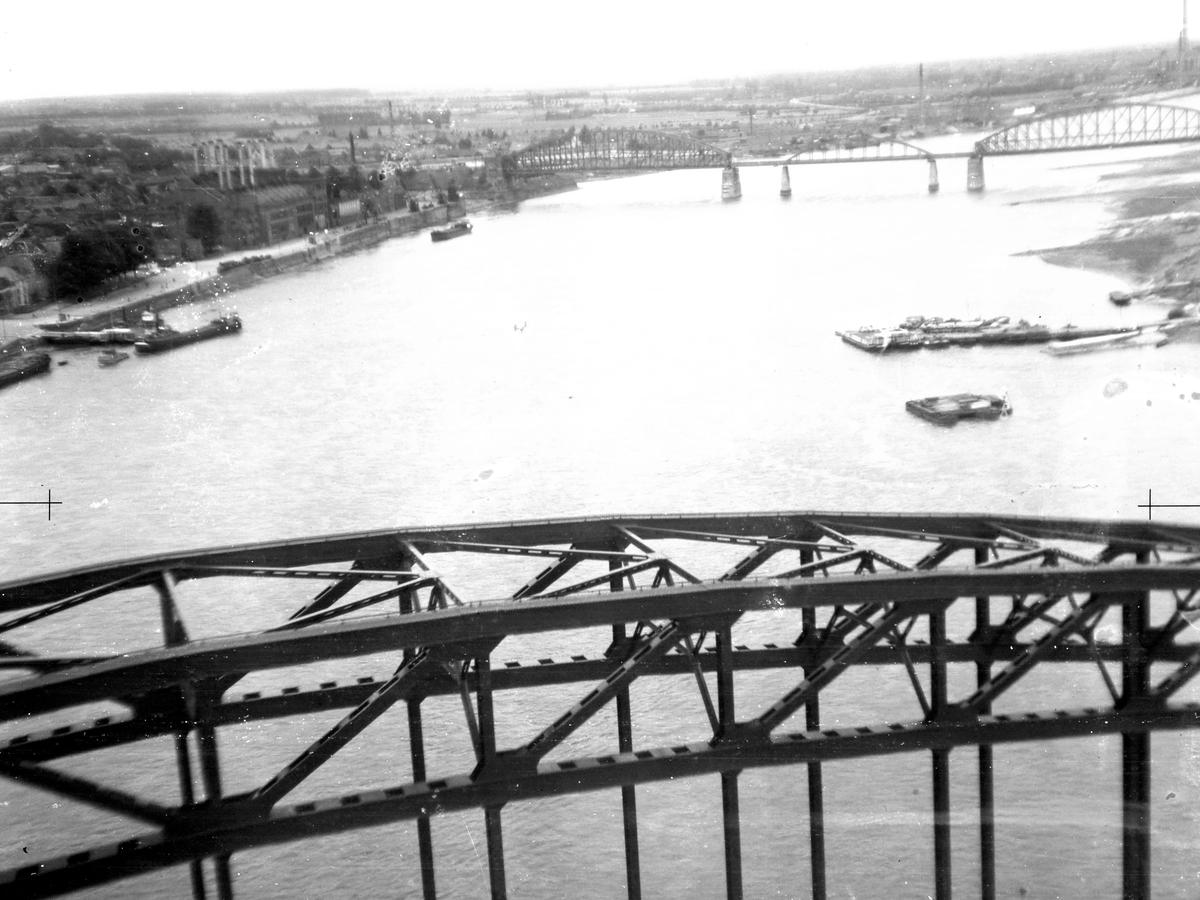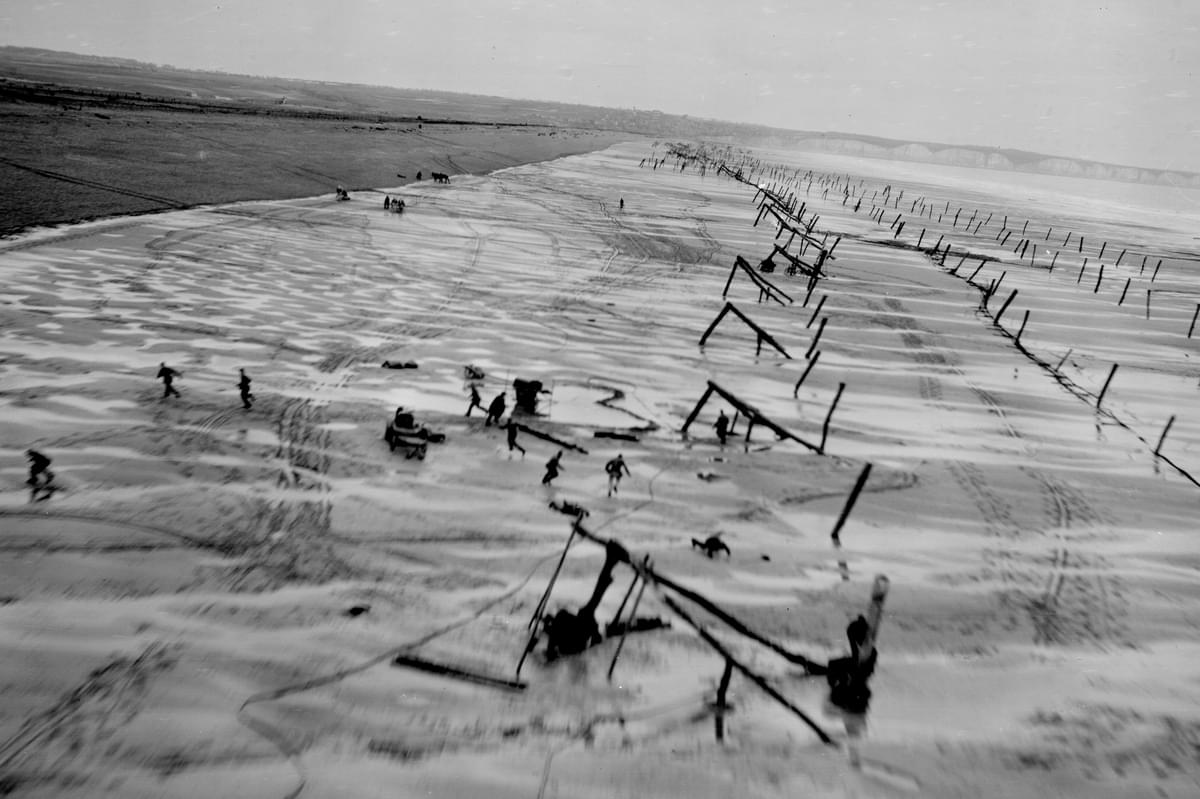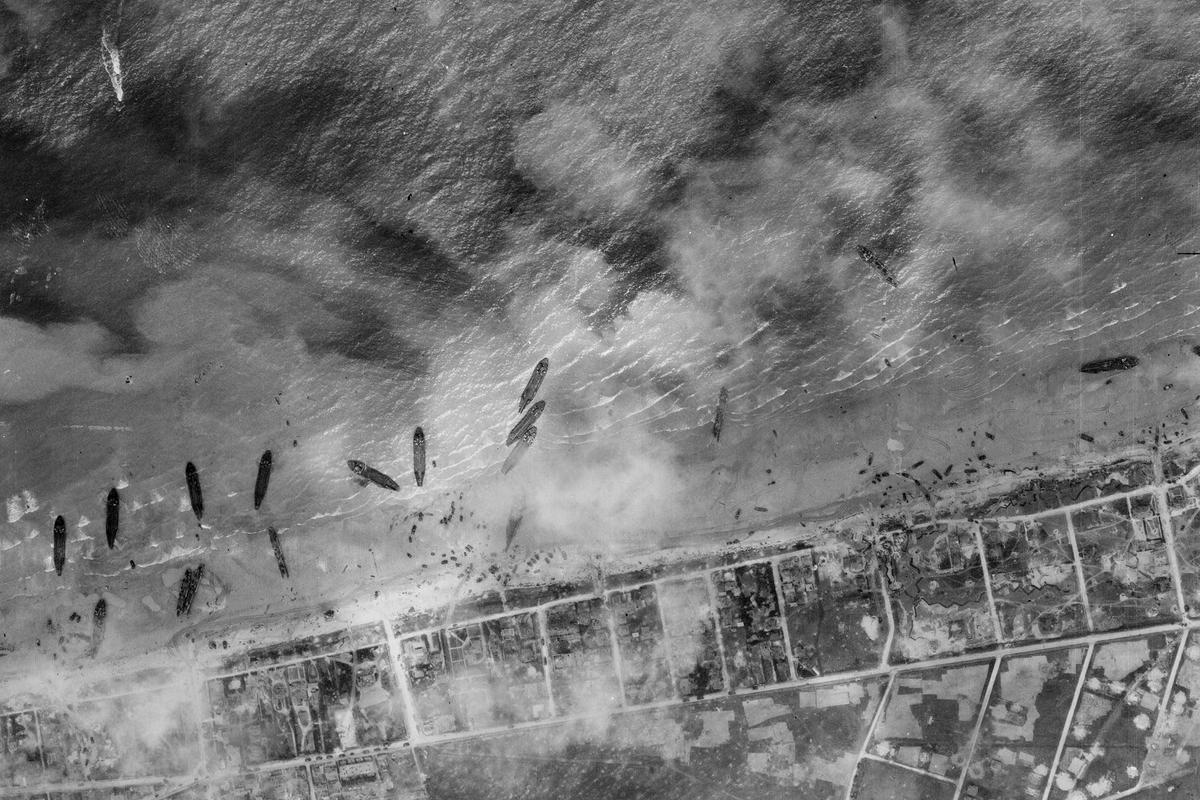Operation Market Garden at 80: The Battle
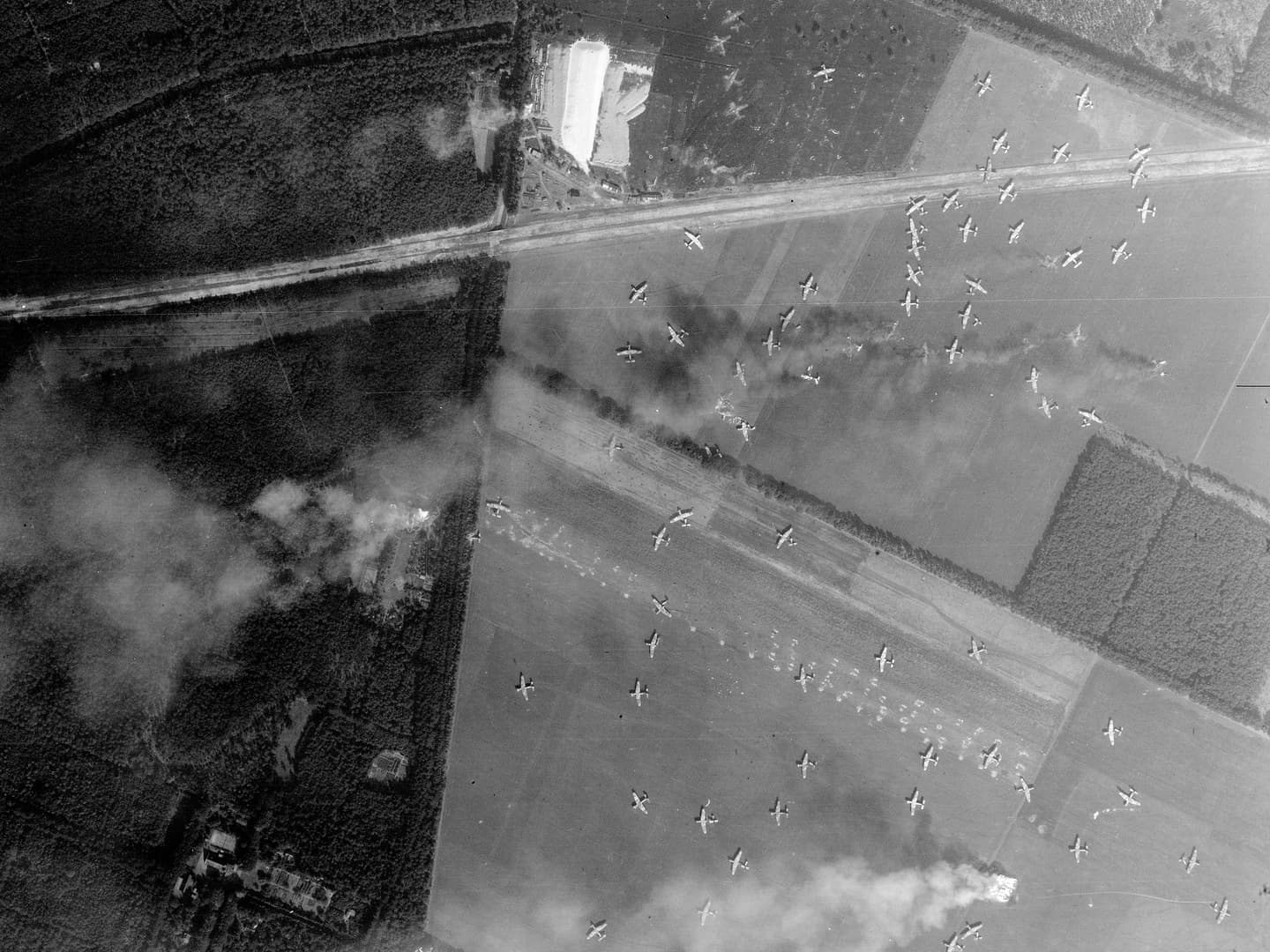
Operation Market Garden came to a halt on 25 September 80 years ago, although further fighting continued around Nijmegen into October. By its end, the Allies had penetrated 60 miles into German territory along a narrow front. In doing so, they suffered c.16,000 casualties killed, wounded or missing during the operation, of whom c.8,000 occurred during the ultimately unsuccessful attempt to hold the bridge at Arnhem. A further 500 Dutch civilians lost their lives during the operation. Although its significance as an operation is undoubted, Operation Market Garden’s legacy is a contested one.
The Assault Begins
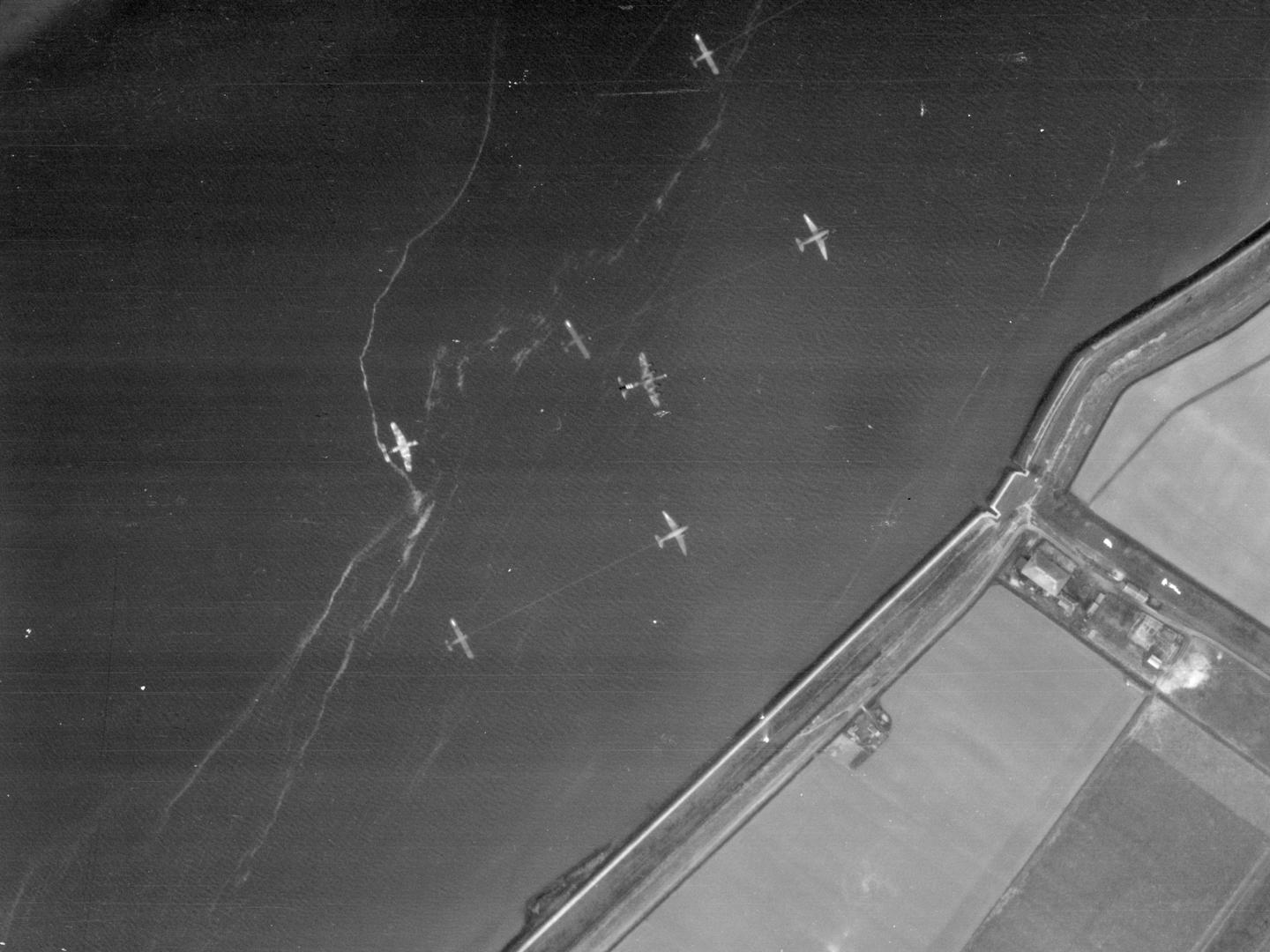
A Short Stirling and C-47 Dakotas towing Horsa and Waco gliders bound for Arnhem and Nijmegen over the Dutch coast; Collection: NARA, Sortie: US7/3356, Frame: 4129 (18 September 1944)
On 17 September 1944, some 20,000 Allied airborne troops were dropped behind enemy lines, near to bridges over rivers and canals in the Netherlands. The 101st US Airborne Division landed around Eindhoven, the 82nd US Airborne Division around Nijmegen and the 1st British Airborne Division around Arnhem. Simultaneously, Allied 2nd Army, with XXX Corps at its spearhead, began to advance northwards from Belgium with the objective of linking up with the airborne troops at each bridge, reaching Arnhem within four days.
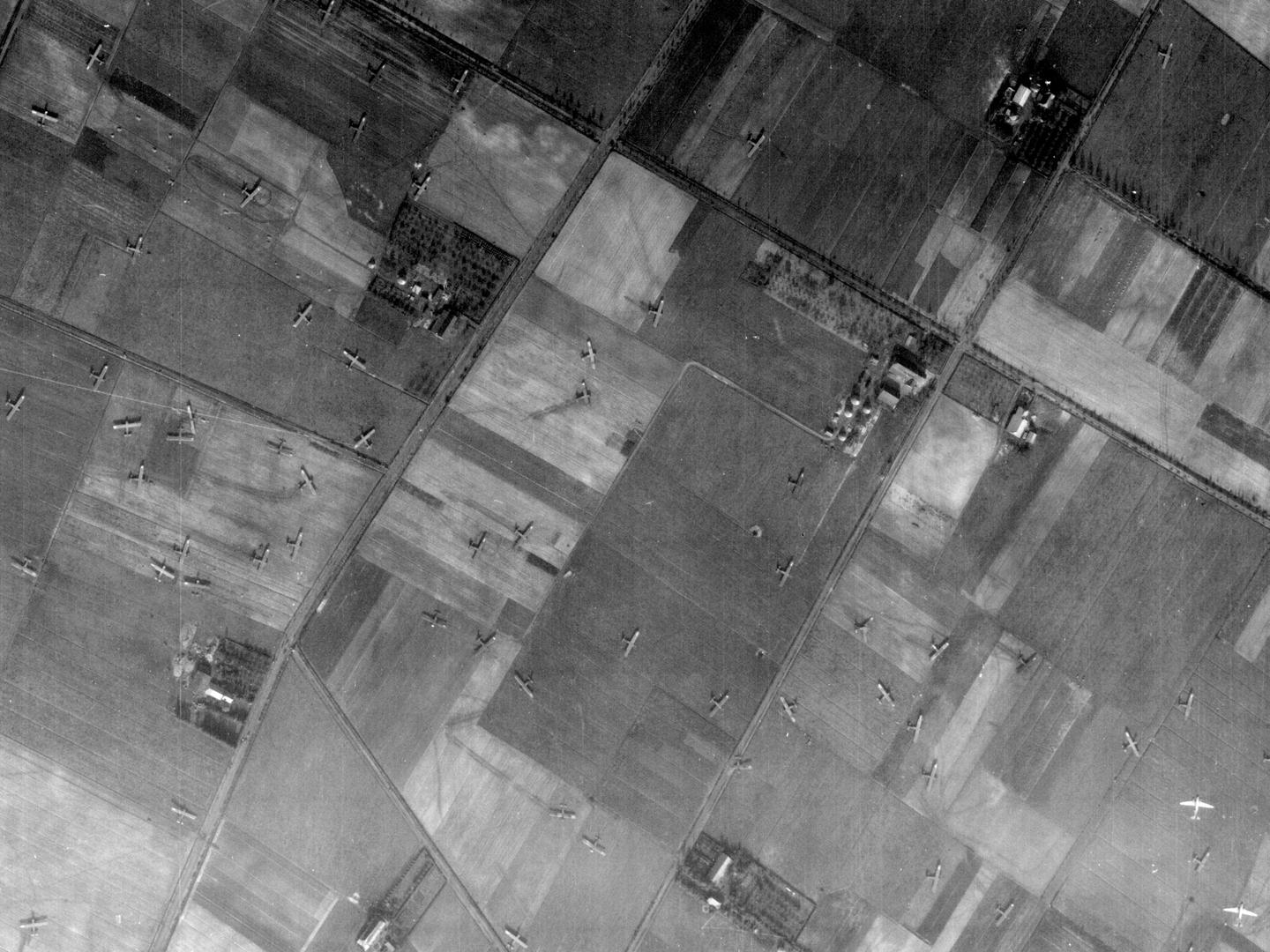
Two C-47 Dakotas (bottom right) flying over American Waco gliders landed in fields near Son en Breugel; Collection: NARA, Sortie: US7/3358, Frame: 3013 (18 September 1944)
Troops continued to parachute into the area or be transported by glider through 17 and 18 September; ultimately, c.35,000 airborne troops participated in Market Garden. There were early successes for the landing troops, who successfully secured initial targets. First contact between XXX Corps advancing overland and the airborne troops around Eindhoven came in the afternoon of 18 September.
Problems Emerge
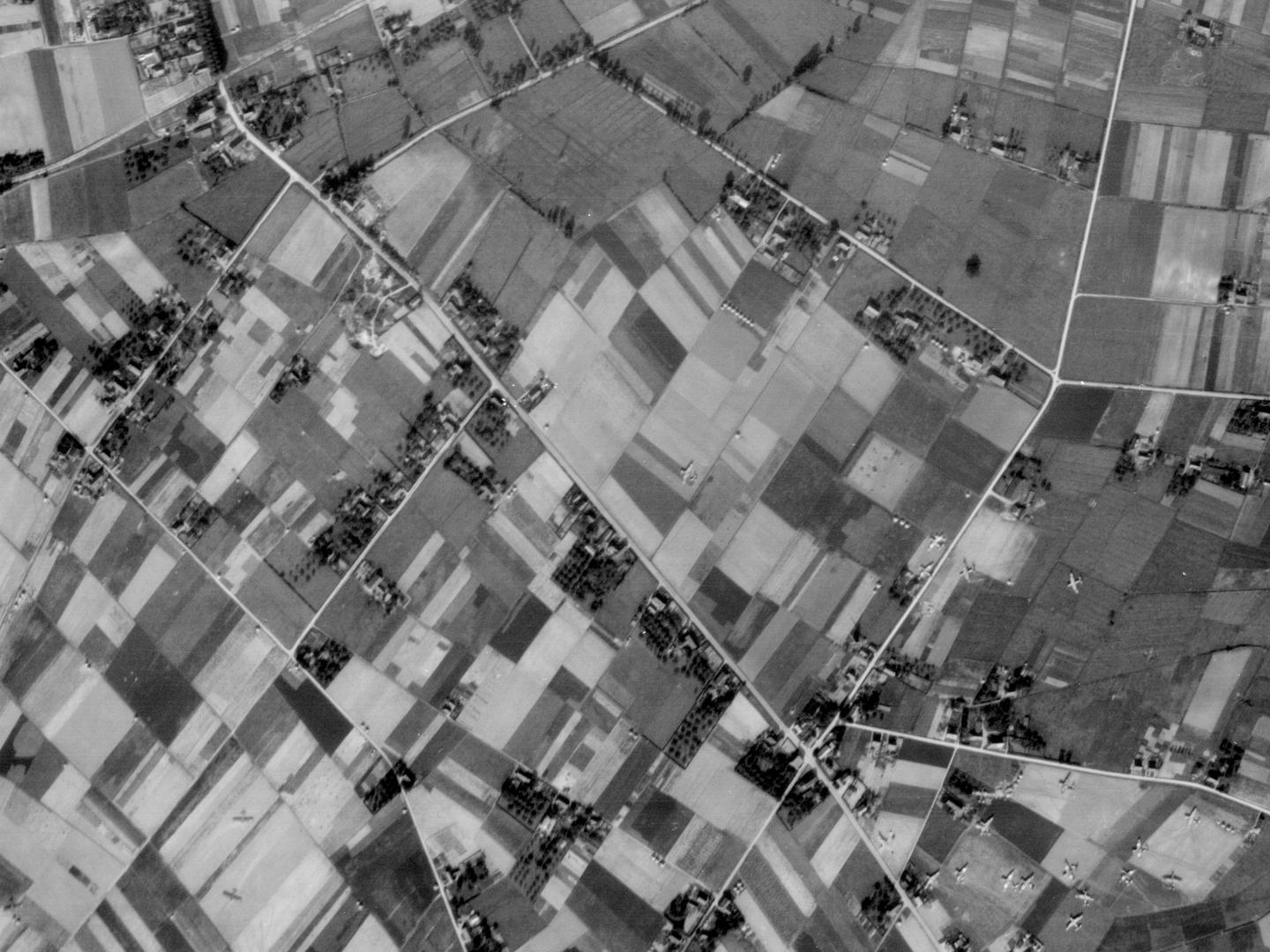
US Waco and British Horsa gliders litter fields near Groesbeek – US troops landed here in anticipation of a German counter-attack; Collection: NARA, Sortie: US7/3356, Frame: 4057 (18 September 1944)
However, problems were already starting to emerge. German resistance to the advance of XXX Corps and around the bridges was stronger than anticipated. In the face of this tenacious German resistance, XXX Corps were unable to keep to the ambitious timetable set for them, leaving the airborne troops increasingly isolated. Bad weather, communication problems and fundamental flaws in the hasty planning of the operation further hampered progress.
Although US airborne troops successfully captured and held their objectives at Eindhoven and Nijmegen, British airborne units had become separated and met heavy resistance in Arnhem. They took the north end of the road bridge, but the prolonged and challenging battles around Eindhoven and Nijmegen meant support did not arrive in time for them to hold it securely.
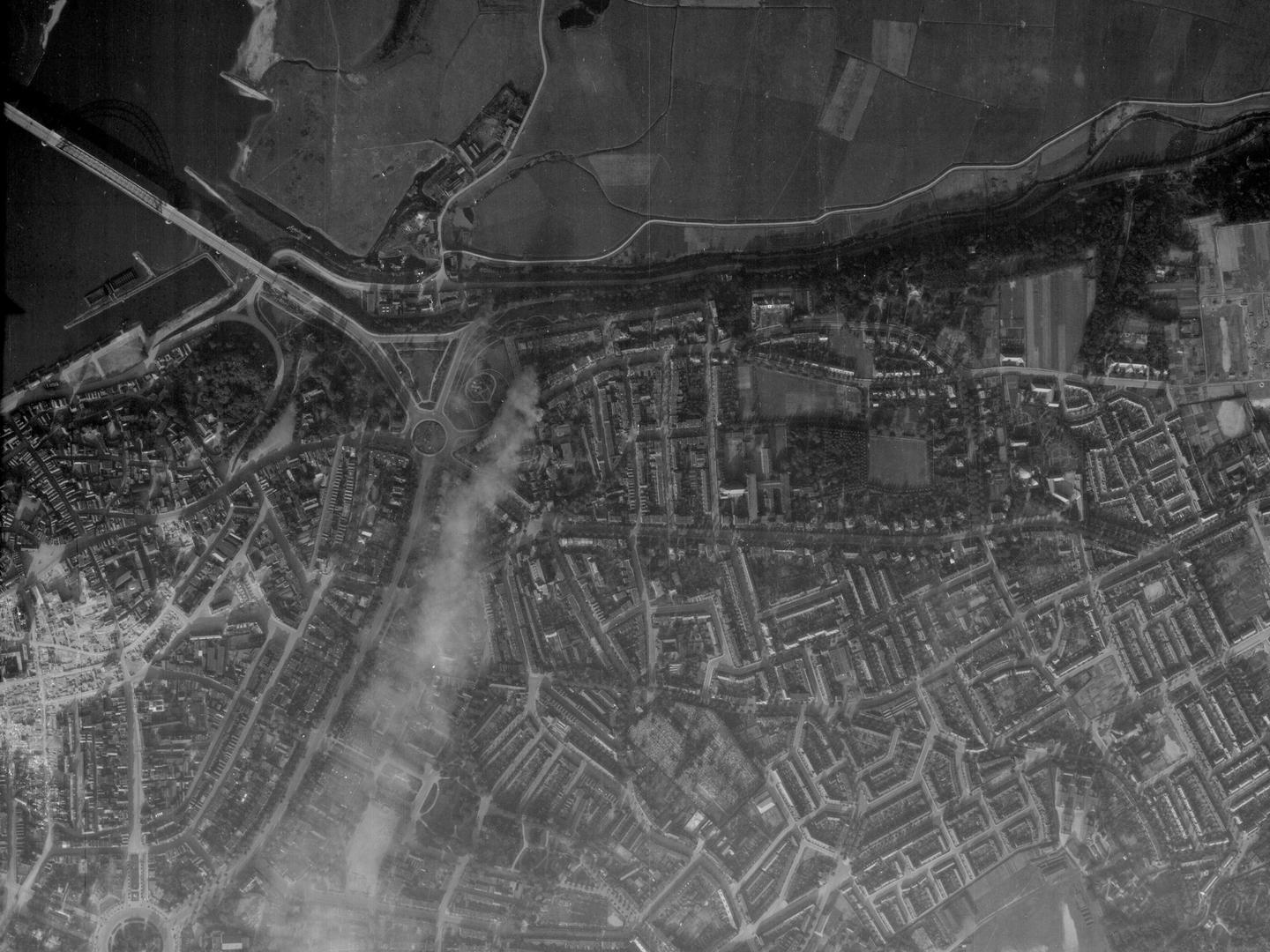
The town of Nijmegen on 18 September – its crucial bridge (top left) would not be secured for another two days; Collection: NARA, Sortie: US7/3358, Frame: 3155 (18 September 1944)
The Plan Fails
Despite stout resistance from Allied soldiers, on 21 September, the Germans recaptured the north end of the Arnhem bridge. Retreating to Oosterbeek, west of Arnhem, British and Polish troops held onto a pocket of ground until 24 September, when most survivors were evacuated south, across the Rhine.
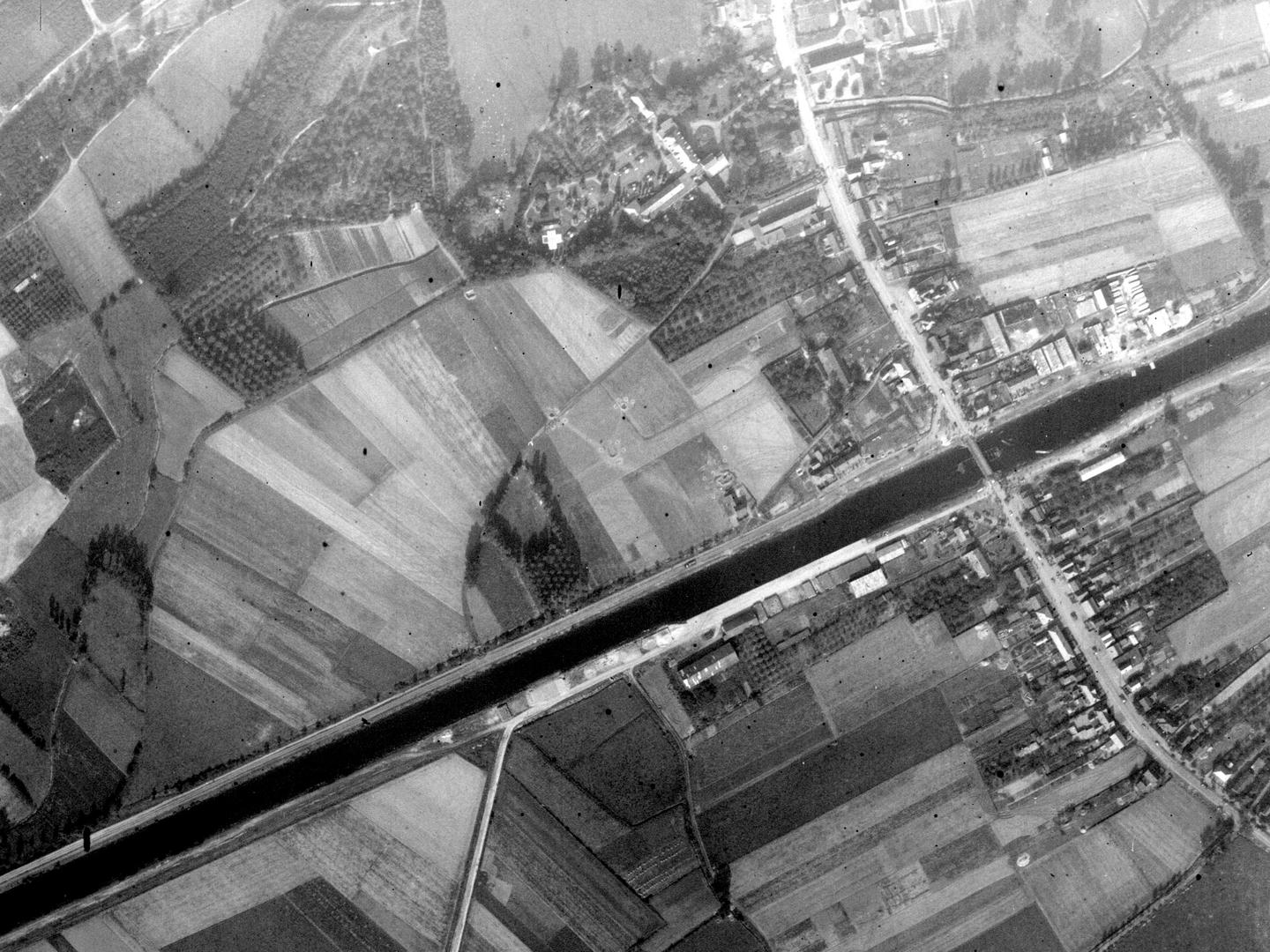
A temporary Bailey Bridge (right) over the Wilhelmina Canal at Son en Breugel, built to replace the one destroyed by the Germans; Collection: JARIC, Sortie: 106G/3010, Frame: 3117 (19 September 1944)
Although the majority of territory and bridges targeted by Market Garden were successfully captured – including Eindhoven and Nijmegen – the failure to secure the bridge at Arnhem meant the plan as a whole failed. Without taking this vital crossing over the Rhine, the advances made elsewhere were arguably meaningless.
Unintended Consequences
Operation Market Garden would have significant unintended consequences elsewhere in Europe as well. Montgomery chose to prioritise Market Garden over clearing German defences around the vital deep-water port of Antwerp, allowing the Germans to strengthen their positions. This led to unnecessarily bloody fighting to secure approaches to the port and the subsequent delays in bringing in resources via Antwerp stalled progress in the European theatre.
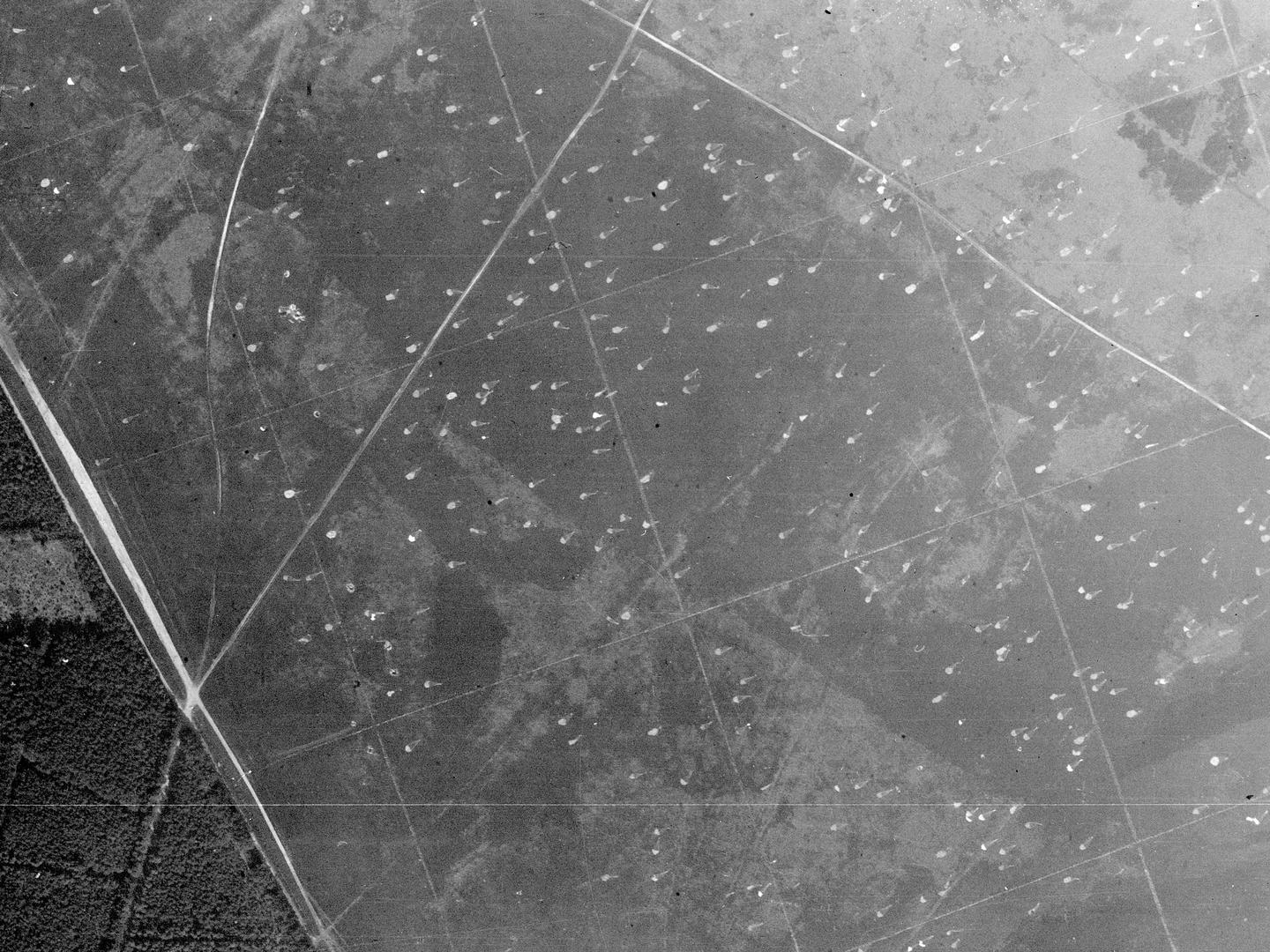
The discarded parachute canopies of hundreds of British paratroops dropped at Ginkel Heath, over 8 miles North-West of Arnhem; Collection: JARIC, Sortie: 106G/2996, Frame: 3054 (19 September 1944)
Even more devastatingly, in retaliation for Dutch support (encouraged by the Allies) for Market Garden, the Germans embargoed food transportation to the western Netherlands. This, combined with a harsh winter, resulted in some 20,000 civilian deaths.
The legacy of Market Garden is still contested today. Although it was undoubtedly a bold effort to finish the war quickly, flaws in its planning and execution mean it is now largely regarded as a failure. However, its significance in the progress of the Western Front is undoubted, for good or ill, and NCAP is privileged to hold valuable photographic records of this major operation.
Ben Reiss, NCAP Collections Manager
See more images relating to Operation Market Garden
